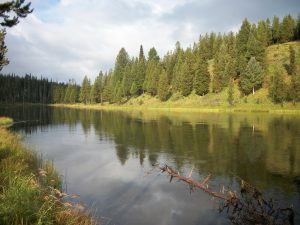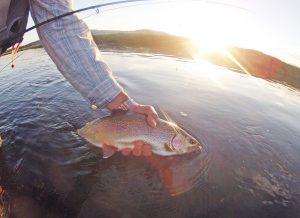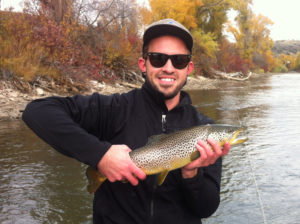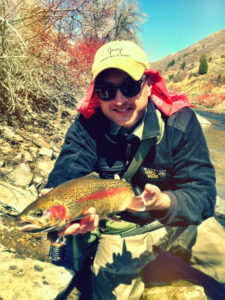This is the time of year where we are starting to see the bug activity picking up on the Henry’s Fork. Around mid-day there has been the long awaited emergence of Blue Winged Olives, and the midge hatches continue to be pretty steady. Fishing midges and BWO in the slower water has been pretty productive, so try using BWO and midge clusters in sizes 16 and 18, and single midge patterns in sizes 18 and 20. I will fish a sparsely tied BWO size 16, or a well dressed BWO in 18. I usually fish 2 flies 2 feet apart on 4 and 5x Rio Suppleflex tippet, on a 9 – 12 foot Rio Powerflex 4x leader.
As for the nymph angler, running a Pat’s Rubberlegs trailed 18″ off the back with a size 14 Pheasant Tail or chartreuse Glo Bug, have been producing good numbers of fish. We are starting to see plenty of beds dug by spawning rainbows, so like every year, please watch your step if you see areas of dug, clean gravel. There are plenty of fish that are pushed in to a little faster water right now, and they are feeding well on nymphs, so don’t just focus on the deep water. I have caught some nice fish in only a foot or two of riffle water, and there seems to be a good amount of them sitting right off the drop offs of fast water in 2-4 foot deep buckets. The slow pools are kind of tricky to nymph, but running a little lighter setups while slowly bouncing the bottom will produce some nice size fish. I know it sounds like fish are all over the river, and they are, but if you focus your efforts on drop offs and slow pools, you will find fish.
Streamer fishing can produce some nice fish right now. Try fishing a slower retrieve with a pause, or a fly on the swing to produce some feisty fish. I usually swing or dead drift sculpin patterns, and strip some larger articulated patterns, usually in the Galloup variety. Color is going to be a day to day, or hour to hour thing, so bring a good selection of streamers to fish. I can usually get fish to eat olive or brown sculpin patterns on every trip, so you should at the very least have those in your box..







